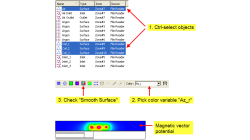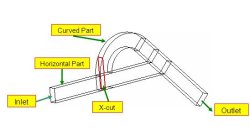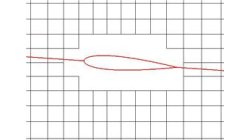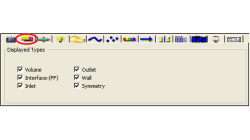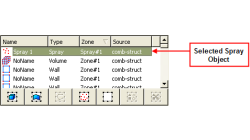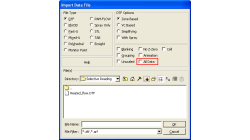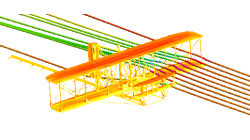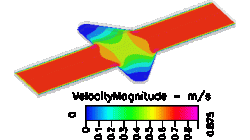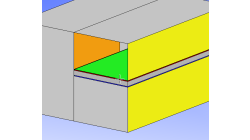- Home
- Resources
- Tips & Tricks
Tips & Tricks
Tracking Multiple Variables with Multiple Legends
When post-processing with CFD-VIEW, one may wish to display two different variables on two different objects. This requires the use of two legends to correspond to the different color mapping of the variables. The legend tracking feature in CFD-VIEW can be used to achieve this. If this topic is of interest to you, please read on.
Abraham
Meganathan
CFD
Clipping of X, Y, Z, Arbitrary Cuts and Iso-Surfaces in CFD-VIEW
In CFD-VIEW, performing X, Y, Z, arbitrary cut and iso-surface operations on volumes yield surface objects. One may desire to visualize and/or perform calculations in a user specified spatial range of the surface instead of the whole surface.
Abraham
Meganathan
CFD
Blanking Option in CFD-VIEW for Visualizing Chimera Grids
CFD-FASTRAN uses closed surfaces, such as walls or blocked regions, to create Chimera holes (or blanked regions) in a grid. By default, the number of buffer layers is set to 1. This means that a closed surface will cut a hole in any mesh that overlaps it, and the initial "blanking" of grid cells defines the hole.
Abraham
Meganathan
CFD
Using CFD-VIEW Display Types
When post processing a simulation in CFD-VIEW, you will often be working with multiple types of objects. Volumes and Surfaces are two types objects that you will most definitely have whether the model is 2D or 3D.
Abraham
Meganathan
CFD
Using the "Extra Variable" in CFD-VIEW
In CFD-VIEW, the Extra Variable list that appears in the Attribute toolbar is used for different purposes depending on the object type. If you are interested in knowing more about this feature, please read on.
Abraham
Meganathan
CFD
Selective Reading for DTF import in CFD-VIEW
When managing a model with complex geometry and/or physics, have you ever wondered how you could simplify the post-processing? You can do it easily using the selective reading capability in CFD-VIEW.
Abraham
Meganathan
CFD
Using the Clone Feature in CFD-VIEW
As the name suggests, the Clone operator creates an exact copy of the input object. The input object could be a surface (iso-surface, plane cut, geometry surface, border object) or a volume. The drawing style of this copy (or copies) is completely independent from that of the original.
Abraham
Meganathan
CFD
Using the Particle Trace Feature in CFD-VIEW
You can use the Particle Trace option in CFD-VIEW to enhance your flow visualization presentations. The use of this feature allows the display of more than one streamline and can be used in one, two, or three directions (but normally used in one or two directions).
Abraham
Meganathan
CFD
Mirroring Tool in CFD-VIEW
One should always take advantage of geometric and solution symmetry to model just one-half or one-fourth of the computational domain to reduce the computational time by significantly reducing the size of the model. After modeling half or one fourth of the model, you always want to present data for the full model.
Abraham
Meganathan
CFD
CFD-VIEW re-pick buffer feature for object selection
When post-processing complex geometries in CFD-VIEW where there are multiple objects close to each other, it is not always easy to pick the correct one, unless you zoom in a lot. To avoid having to zoom in and zoom out many times, you can use the re-pick buffer feature.
Abraham
Meganathan
CFD
